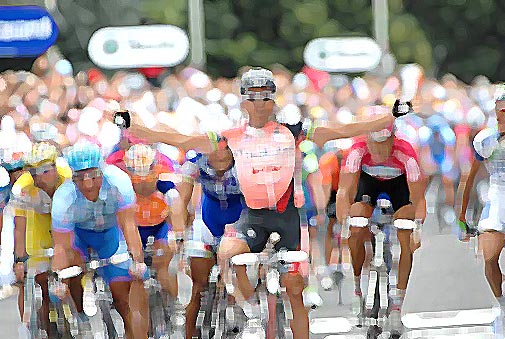Credit Suisse analysts have come up with a startling number:
52.
That’s 52 followed by 9 zeros and inserting 3 commas (I am fond of commas).
$52,000,000,000 in subprime CDO’s at risk.
The losses are projected to have a ratio of about 80%/20% hedge funds/banks. This is not bigger than the Savings & Loan FDIC bailout amount of $125 billion about 15 years ago whose costs were born by the taxpayers through the massive sell off of assets through the sub-agency Resolution Trust Corporation, lovingly known by appraisers as the RTC. It was nirvana for appraisers, because we got to estimate values for complex foreclosed assets of defunct S&L’s, including hair-brained development deals and oddball asset classes conjured up by people who had no business doing what they did.
Major League Baseball’s All-Star game is going on right now and the Tour de France bicycle race (my favorite, second only to March Madness) began last Saturday. Baseball and professional bicycling have been plagued by scandals including steroids, human growth hormones, blood doping and others. I am big fans of both sports, but they have been tainted for many years with this form of cheating, whether or not the drugs were legal at the time.
Did it make me write off these sports as a fan? No.
Does it taint the records and perceptions of the players and does it place the sports at risk in the long term? Yes, perhaps.
When things are going well, its often easier to look the other way.
These professional athletes may have achieved milestone records, won championships and received big contracts in exchange for perhaps, a shorter life expectancy. Perhaps they suffered from a limiting understanding or an obscured appreciation of their own health risk.
Institutional investors and investment bankers also suffered from a lack of understanding of the real risks and what these subprime mortgages really represented. Like professional sports, there is nothing inherently wrong with subprime lending as long as ethics are adhered to and guidelines or standards are followed. While subprime loan applicants typically have a much higher credit risk, it was the issuers of these loans that were the parties that should have scrutinized by investors. The subprime mortgage market may not have melted down if basic lending standards were applied in the subprime lending process.
Don’t mean to pontificate, but its that lack of an appreciation of risk, and the disconnect with asset values that is something I deal with every day as an appraiser. Plus, its an easy way to speak about what’s on my mind in one post: MLB, The Maillot Jaune and a changing real estate market.
One Comment
Comments are closed.



I gave up on my enjoyment bicycle racing once I found out how much everyone does it. It was a very sad denouement for me. Le Tour has been very good to me and I still have VHS tapes of Greg Lemond riding for La Vie Claire. But I just can’t shake the notion that riders feel they HAVE to do it to compete. Rumors are that some people got pushed out because they refused to take them. It’s very disheartening.
You speak of risk, but I doubt the young riders who were taking EPO early on realized they would die of heart attacks from taking it. Who offered them the risks in plain terms and let them make their own judgement? Did anyone say to them, “Take this and you may win a stage of Le Tour, but you may also be dead in a year or two?” I think those EPO deaths frightened them for a while, but it came raging back in 1998 when whole teams were being banned and riders refused to ride that year.
If you haven’t had a chance to see a Tour or a live race, do it. They’re fun and you meet some really nice fans along the way. I had a great time riding in a car from Geneva to Neuchatel with a random couple from LA. We were trying to beat all the team busses on the roads through the countryside. Very memorable!